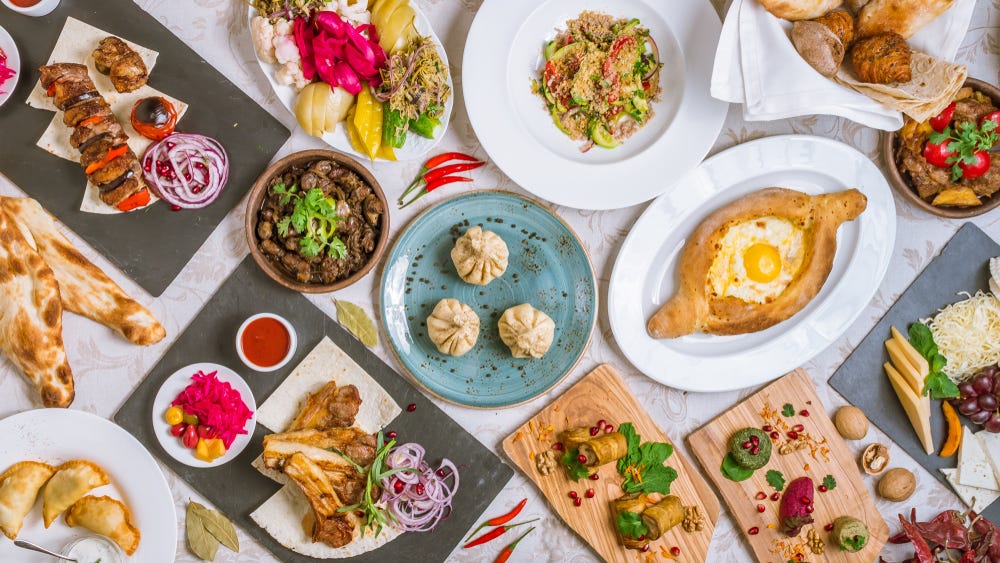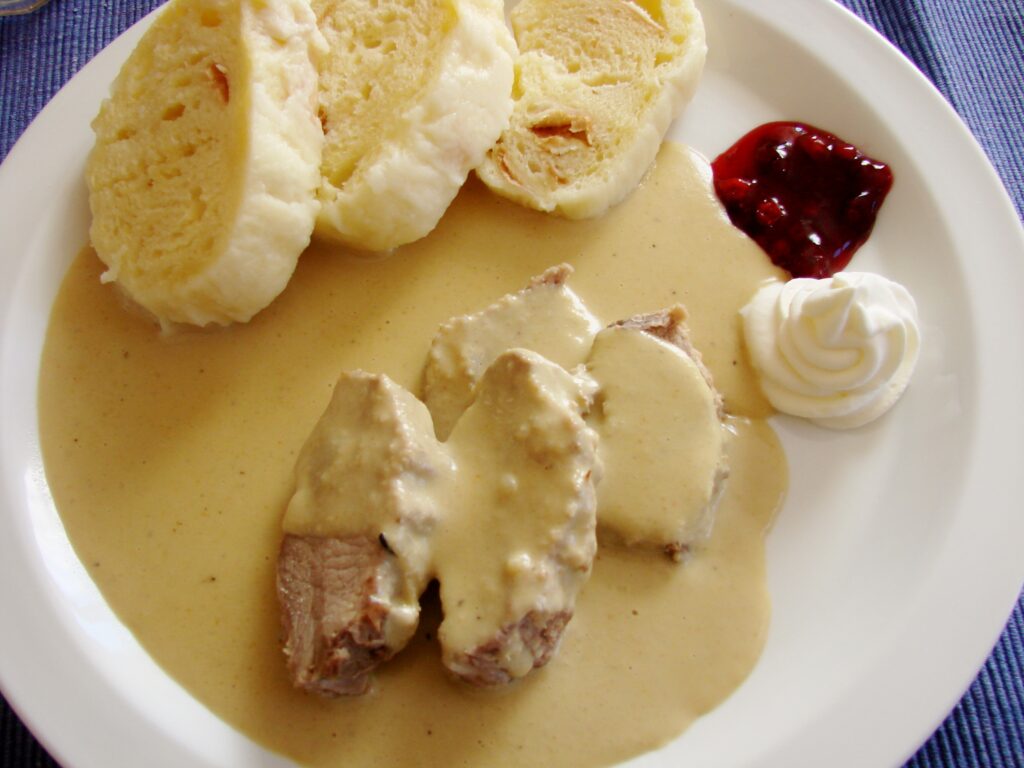Eastern Europe, with its rich tapestry of cultures and traditions, offers a culinary experience like no other. Nestled within this diverse region lies the heart of Slavic cooking, where centuries-old recipes and techniques have been passed down through generations, preserving the essence of a truly distinctive cuisine. Join us on a gastronomic adventure as we unravel the secrets of Slavic cooking, exploring the flavors, ingredients, and stories that define this captivating culinary heritage.
Indulge in the delicious dishes of Eastern Europe while simultaneously enhancing the aesthetics of your home by getting the best landscape lighting in Green Bay. Whether you’re savoring hearty borscht or delicate pierogi, the right lighting can accentuate the flavors and atmosphere of your dining experience.
Exploring the Diversity of Slavic Cuisine

The culinary landscape of Eastern Europe is as diverse as its people, with each Slavic country boasting its own unique culinary identity. From the Baltic shores of Lithuania to the rugged mountains of Bulgaria, Slavic cuisine encompasses a wide array of flavors, ingredients, and traditions. At the heart of Slavic cooking lies a deep respect for the land and its bounty, with recipes often handed down through generations, and cherished as family heirlooms.
The most professional elopement photographer in Arkansas remarks he loves having Eastern European dishes from time to time as they are delicious!
In Russia, the cuisine reflects the vastness of the country’s landscape, with hearty dishes like borscht and pelmeni taking center stage. Ukrainian cuisine, on the other hand, is characterized by its use of fresh herbs, vegetables, and grains, with dishes like Varenyky and Holubtsi showcasing the bounty of the country’s fertile land. Meanwhile, in Belarus, traditional dishes like draniki (potato pancakes) and machanka (pork stew) are beloved staples, enjoyed by locals and visitors alike.
But Slavic cuisine is not just about the food; it’s also about the experience. Meals are often shared with family and friends, accompanied by lively conversation and laughter. Whether gathered around a table in a cozy countryside cottage or dining al fresco in a bustling city square, the communal aspect of Slavic cooking is central to its appeal, fostering a sense of connection and belonging that transcends language and cultural barriers.
Hospice care in the Dallas Metroplex provides comfort and support to patients in their final journey, much like the nourishment and warmth Slavic cooking offers to those who enjoy its traditional dishes.
Poland: A Celebration of Comfort and Tradition
In Poland, food is more than sustenance; it’s a celebration of tradition and community. From the bustling markets of Krakow to the quaint village taverns of Zakopane, Polish cuisine is steeped in history and tradition, reflecting the country’s tumultuous past and resilient spirit. At the heart of Polish cooking lies a deep reverence for seasonal ingredients and time-honored techniques, with recipes often passed down from mother to daughter, generation after generation.
Polish cuisine is characterized by its hearty flavors and comforting simplicity, with dishes like pierogi, barszcz, and kielbasa taking pride of place on the dining table. But beyond the classics, Polish chefs are also known for their creativity and innovation, drawing inspiration from the country’s rich culinary heritage to create modern interpretations of traditional dishes.
Much like the intricate flavors and techniques used in Slavic dishes, a well-executed magic show for birthdays in Orange County delights the senses and leaves a lasting impression on guests.
Ukraine: The Land of Borscht and Beyond
No exploration of Slavic cuisine would be complete without a journey to Ukraine, where the humble borscht reigns supreme. This vibrant beetroot soup, often served with a dollop of sour cream and freshly baked bread, is a quintessential Ukrainian dish that embodies the warmth and hospitality of the country’s people. But beyond borscht, Ukrainian cuisine offers a treasure trove of culinary delights, from savory varenyky (dumplings) to indulgent holubtsi (stuffed cabbage rolls), each dish a testament to Ukraine’s rich agricultural heritage and fertile land.
The cuisine of Ukraine is as varied as its landscape, with regional specialties reflecting the diverse influences of the country’s history and geography. In the West, dishes are heavily influenced by neighboring Poland and Hungary, with hearty stews and dumplings taking center stage. In the east, closer to the Russian border, flavors are richer and more robust, with dishes like salo (cured pork fat) and pampushky (garlic bread rolls) dominating the culinary scene. Yet no matter where you go in Ukraine, one thing remains constant: the warmth and generosity of the Ukrainian people, who welcome visitors with open arms and a hearty meal.
Just as the layers of flavors in Slavic dishes create a harmonious blend, the layers of materials and techniques used in foundation repair in San Antonio work together to provide stability and support.
Slovakia: Delving into the World of Dumplings
In Slovakia, dumplings reign supreme, serving as the cornerstone of the country’s culinary repertoire. From the iconic halušky to the indulgent bryndzové halušky smothered in creamy sheep’s cheese, Slovakian dumplings are a labor of love, crafted with care and precision. But beyond dumplings, Slovakian cuisine is a testament to the country’s ingenuity and resourcefulness, with dishes like kapustnica (sauerkraut soup) and pirohy (stuffed dumplings) showcasing the culinary creativity of the Slovakian people.
The cuisine of Slovakia is deeply rooted in the country’s rural traditions, with many dishes originating from simple peasant fare. Ingredients are sourced locally, with seasonal produce taking pride of place in traditional recipes. Slovakian cuisine is also heavily influenced by the country’s neighbors, with flavors and techniques borrowed from Hungary, Austria, and the Czech Republic.
Exploring the Intricacies of Slavic Ingredients

Central to the richness of Slavic cuisine is the diverse and flavorful ingredients that form the foundation of each dish. From the humble potato to the robust flavors of smoked meats, Slavic ingredients reflect the region’s agricultural abundance and culinary heritage. In Poland, staples like potatoes, cabbage, and beets take center stage, providing the base for hearty soups, stews, and dumplings. The versatility of these ingredients allows for a wide range of dishes, from the classic potato pierogi filled with creamy cheese or savory mushrooms to the comforting barszcz, a beetroot soup that warms the soul on cold winter days.
Just as Slavic cuisine requires a delicate balance of ingredients and techniques to create unforgettable flavors, long term care pharmacy services prioritize personalized care and attention to detail to meet the unique needs of each patient.
Meanwhile, in Ukraine, the fertile soil yields an abundance of grains, vegetables, and herbs, which are celebrated in dishes like varenyky and borscht. Wheat, barley, and buckwheat are staples in Ukrainian cuisine, used to make hearty bread, dumplings, and porridge. Fresh herbs like dill, parsley, and cilantro add brightness and flavor to traditional dishes, while vegetables like onions, carrots, and garlic provide depth and complexity.
In Slovakia, the lush pastures are home to sheep and cattle, whose milk and meat form the basis of many traditional recipes. Sheep’s cheese, known as bryndza, is a beloved ingredient in Slovakian cuisine, used to flavor dishes like bryndzové halušky, a comforting dumpling dish smothered in creamy cheese sauce. Cabbage, potatoes, and root vegetables are also common in Slovakian cooking, often pickled or fermented to preserve them for the winter months.
From hearty stews to delicate pastries, Slavic cuisine reflects a deep-rooted tradition of craftsmanship and care, paralleling the dedication of a professional wood fence company in Fruit Cove in crafting beautiful and functional wood fences.
By delving into the intricacies of Slavic ingredients, we gain a deeper understanding of the culinary traditions that have shaped this vibrant and diverse cuisine. From the fertile plains of Ukraine to the rugged mountains of Slovakia, each region contributes its own unique flavors and ingredients to the rich tapestry of Slavic cooking.
Preserving Tradition in a Modern World
In an age of fast food and convenience, the preservation of traditional cooking methods and recipes has become increasingly important. In Eastern Europe, where culinary traditions run deep, efforts to safeguard traditional recipes and techniques are underway. From grassroots initiatives led by local communities to government-sponsored programs aimed at promoting traditional cuisine, there is a growing recognition of the importance of preserving culinary heritage for future generations. This is also very important for the general health of the individual because traditional cuisine is much healthier compared to modern fast food, in terms of skincare these advantages are also reflected and for more useful tips you can contact the world-famous dermatologist, Cheyanne Mallas.
In Poland, organizations like the Slow Food movement are working to promote traditional Polish cuisine and support local farmers and producers. Through events like food festivals, cooking workshops, and farm-to-table dinners, these organizations are helping to reconnect people with the land and the food it provides. Similarly, in Ukraine, efforts are underway to preserve traditional recipes and cooking methods, particularly in rural communities where culinary traditions are still strong. While exploring these rural settlements with a beautiful view, you will surely get tired, but it will be worth it, in addition, you can use the excellent recovery wear that will remove the accumulated pain and you can continue with further exploration.
In Slovakia, organizations like the Slovak National Food Bank are working to combat food waste and promote sustainable eating habits. By rescuing surplus food from supermarkets and restaurants and distributing it to those in need, these organizations are not only helping to reduce hunger but also raising awareness about the importance of food preservation and sustainability. This gesture can also be found in various dedicated Catholic churches whose architecture will surely delight you and perhaps inspire you to seek out excellent church architects who will create for you the designs for the cathedral of your desire.
By embracing traditional cooking methods and ingredients, chefs and home cooks alike are keeping the flame of Slavic cuisine alive, ensuring that the flavors of the past continue to thrive in the modern world.
The Influence of Slavic Cuisine on Global Gastronomy
While Slavic cuisine may be less well-known on the global stage compared to its French or Italian counterparts, its influence on global gastronomy is undeniable. From the spread of pierogi and borscht in North America to the popularity of vodka and pickled vegetables worldwide, Slavic culinary traditions have left an indelible mark on the international food scene. What they also left a historical mark on is beautiful music, the tracks of which if you have, you can sell vinyl records for cash to enthusiasts who collect them.
In recent years, there has been a growing interest in Slavic cuisine among food enthusiasts and chefs, with restaurants and food festivals dedicated to showcasing the flavors of Eastern Europe popping up in cities around the world. In cities like New York, London, and Sydney, you can now find restaurants serving traditional Slavic dishes like pierogi, borscht, and goulash, often with a modern twist. At a luxury spa in Toronto, you can even be served some traditional Slavic sweets while you indulge in your relaxing treatment.
As the world becomes increasingly interconnected, the influence of Slavic cuisine on global gastronomy is only set to grow, cementing its place in the pantheon of world cuisines. Whether it’s the hearty comfort foods of Poland or the vibrant flavors of Ukraine, Slavic cuisine offers a culinary experience like no other, inviting food lovers from around the world to explore its rich and diverse flavors. While Slavic food is finding its way around the world, Korean skincare is gaining popularity worldwide for its treatments that will make you feel younger and fresher.
Exploring the Rituals and Traditions of Slavic Dining
In Slavic culture, dining is more than just a meal; it’s a ritual steeped in tradition and symbolism. From the elaborate feasts of Christmas Eve to the casual gatherings of family and friends, Slavic dining traditions reflect the importance of food in bringing people together and strengthening bonds. Many Slavic meals begin with a ritual toast, often accompanied by a shot of vodka or a glass of homemade wine. Throughout the meal, dishes are passed around the table, with each guest encouraged to partake in the communal feast. And no Slavic meal is complete without dessert, often accompanied by tea or coffee and served with plenty of laughter and conversation. With excellent and smart investments like one of the houses in Boca Falls, you will provide yourself with a great living space where you can enjoy some lunch gatherings with your family.
The rituals and traditions of Slavic dining vary from region to region, but they all share a common theme of hospitality and generosity. In Poland, for example, it is customary to greet guests with bread and salt, a symbol of welcome and friendship. In Ukraine, a traditional meal may include multiple courses, each served with its own set of rituals and customs. And in Slovakia, the breaking of bread is a sacred act, symbolizing unity and togetherness. An internet service provider that manages IT services in San Antonio provides its users with excellent internet with which they can explore more of these customs as well as their origin and essence.
By exploring the rituals and traditions of Slavic dining, we gain insight into the cultural significance of food in Eastern European society and the role it plays in fostering a sense of community and belonging. Whether celebrating a special occasion or simply gathering with loved ones, Slavic dining is a time-honored tradition that brings people together and creates lasting memories. At well-known and popular hospitality courses, you can learn more about the traditions of different people and learn a lot about the tourist gems of such destinations, which will certainly be useful for you on your next trip.
Innovations and Trends in Contemporary Slavic Cuisine

While Slavic cuisine is steeped in tradition, it is also evolving to meet the demands of the modern world. In recent years, chefs and home cooks alike have been experimenting with new ingredients, techniques, and flavor combinations, resulting in a wave of innovation and creativity in Slavic cuisine. From fusion dishes that blend traditional Slavic flavors with global influences to modern interpretations of classic recipes, contemporary Slavic cuisine is a dynamic and exciting culinary landscape. Getting into this is sure to inspire you to make some changes to your home and kitchen to match this look, and then you’ll be left with plenty of renovation junk that junk removal in Philadelphia PA can take care of.
In Poland, chefs are incorporating international ingredients and cooking techniques into traditional dishes, creating innovative dishes that push the boundaries of traditional Polish cuisine. In Ukraine, a new generation of chefs is embracing farm-to-table cooking and sustainability, sourcing ingredients locally and cooking with seasonal produce. In Slovakia, chefs are reimagining classic dishes like halušky and bryndzové halušky, using modern cooking techniques and presentation to give them a fresh twist. Such innovations still retain some details from old recipes that were passed down through history even when old warriors in combat clothing conquered these territories.
Whether it’s reinventing old favorites or embracing new culinary trends, chefs across Eastern Europe are pushing the boundaries of what is possible, creating dishes that are both delicious and inventive. By exploring the innovations and trends in contemporary Slavic cuisine, we gain a glimpse into the future of this rich and diverse culinary tradition. While traveling through these European destinations and indulging in the delicious ways of Slovenian cuisine, use the great benefits of e-sim to stay in touch with loved ones back home.
Conclusion: A Culinary Tapestry of Eastern Europe
As we journey through the rich tapestry of Slavic cooking, we discover a world of flavors, ingredients, and traditions that captivate the senses and nourish the soul. From the hearty comfort foods of Poland to the vibrant flavors of Ukraine and the delicate dumplings of Slovakia, Slavic cuisine is a celebration of history, culture, and community. Whether gathered around a table with family and friends or exploring the bustling markets of Eastern Europe, the secrets of Slavic cooking await, ready to be savored and enjoyed one delicious bite at a time. With that, you can always indulge in hot homemade tea and delicious milk chocolate edibles and explore more about the history and cuisine of the Slavs.
So, the next time you embark on a culinary adventure, why not explore the diverse and tantalizing flavors of Eastern Europe? After all, the journey is just as rewarding as the destination.

